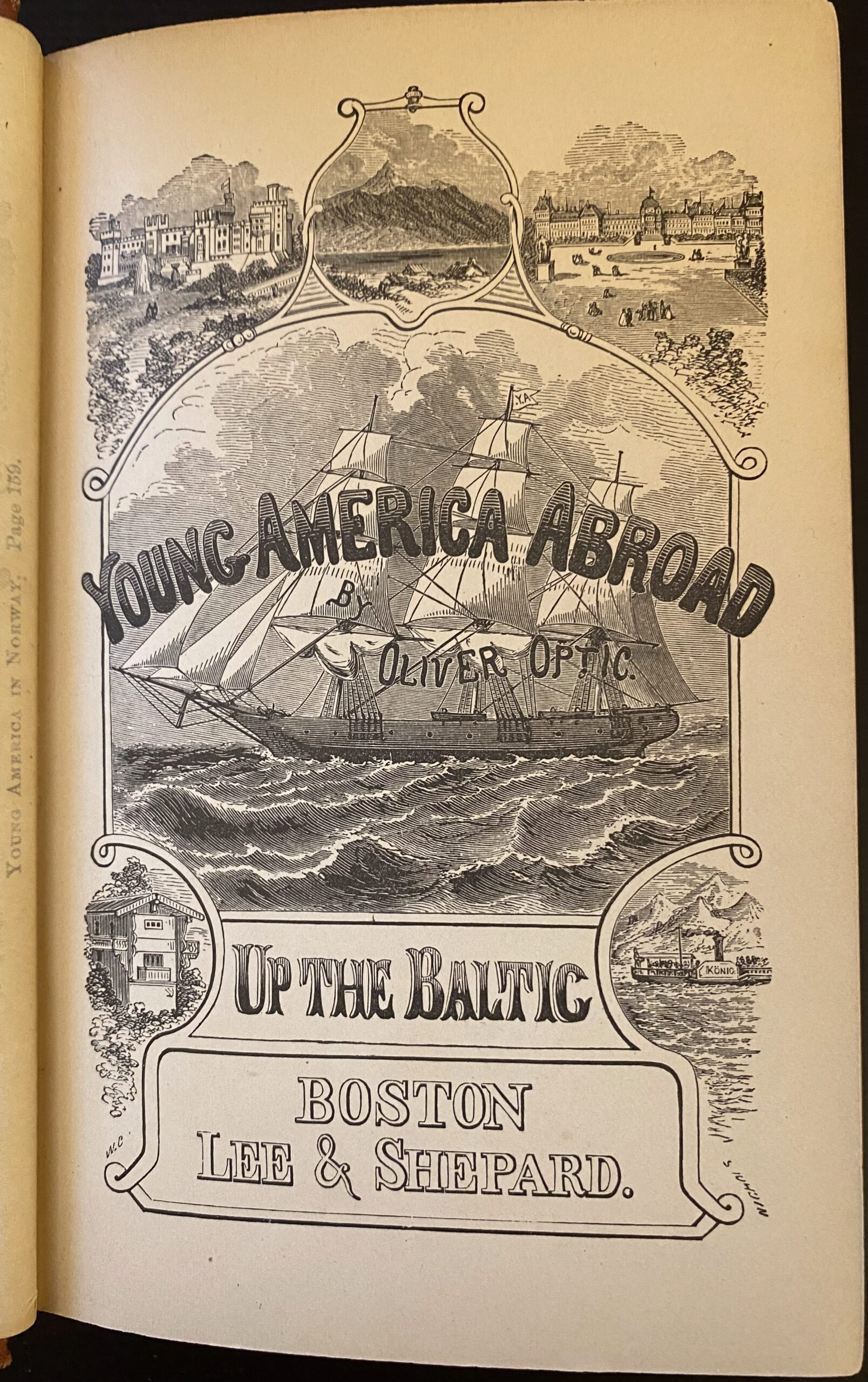- Title: Young America Abroad: Up the Baltic
- Author: Oliver Optic
- Publisher: Lee & Sheppard
- Estimated year of printing: 1873
Notes:
Oliver Optic was the pen name for William T. Adams (1822 – 1897). Adams was born and lived his entire life in Massachusetts, teaching at several schools before becoming an author. In his life, he travelled extensively to Europe, Asia, and Africa. He began writing in 1853, and eventually retired from teaching in 1865 to focus on writing full time. His experience teaching young boys, combined with his own experiences traveling internationally, resulted in him writing very successful juvenile fiction adventure stories. He typically wrote his books in series, such as the Boat Club, Army and Navy, and this Young America Abroad series (which actually ended up having two series).
The Young America Abroad series was about the international travels of the young gentlemen of the “Academy Squadron”. Over the course of the series, they travel to a large number of countries, all in Europe. In this particular book, first published in 1871, they travel to Norway, Sweden, and Denmark. This book jumped out to me, as my family immigrated from Sweden around the start of the 20th century.
Louisa May Alcott was a critic of Adams, using her book Eight Cousins to criticize Adams’ use of slang, his cast of newsboys, and stories of police courts and saloons. Still, Adams wrote over 100 books in his lifetime, under several different pen names, and they were generally very popular with his target audience of young boys. This book includes advertisements for other Oliver Optic books on the front and end papers.
Historical context:
When this book was printed in 1873, Ulysses S. Grant was President of the United States. Eight years earlier, in 1865, Abraham Lincoln was assassinated and the Civil War ended. The intervening years from 1865 through 1877 defined the Reconstruction Era, with several Constitutional Amendments being passed related to ending slavery (the 13th, 14th, and 15th amendments), and the states of the Confederacy being gradually re-admitted to the United States: Arkansas, Louisiana, Florida, North Carolina, South Carolina, and Alabama in 1868, then Virginia, Mississippi, Texas, and Georgia in 1870.




